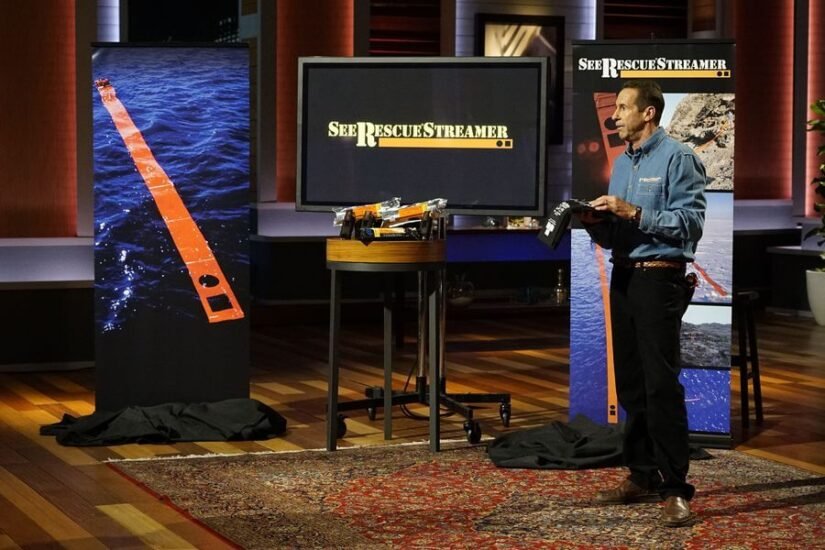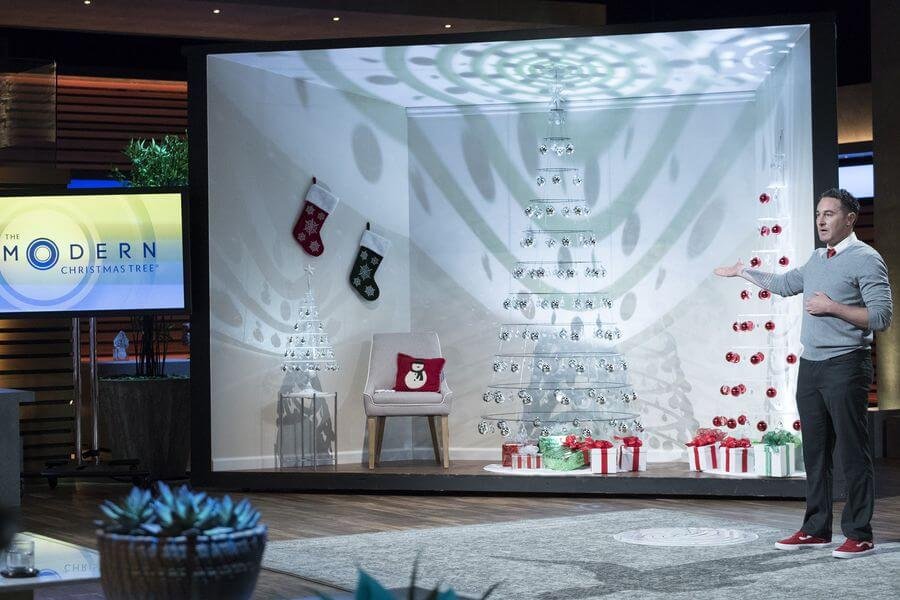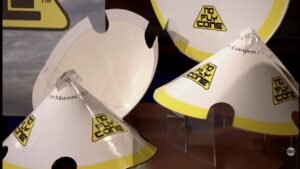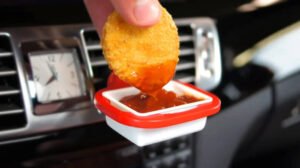Let’s bust a classic Shark Tank myth before we get into numbers. Plenty of founders walk away with a handshake and a smile on primetime TV. But what happens when the cameras cut and the grind starts? That’s where the real story is—especially if you’re the kind of person who wants more than just a 60-second Shark Bites update. If you’re chasing real information about Pricetitution’s Shark Tank run, this article’s for you. No fluff, no worship. Just hustle, hard lessons, and some street-smart commentary from someone who’s seen the ups, the downs, and all the deal or no deal drama.
Contents
TogglePricetitution: The Quick and Dirty Overview
Pricetitution is an adult party card game where players try to guess the amount of money it would take for their friends to do ridiculous—or sometimes cringe—challenges. Think Truth or Dare meets the gig economy. It’s not just a deck of cards; it’s a social experiment wrapped in party packaging.
Dan Killian is the hustler behind Pricetitution. He walked into the Tank during Season 10, Episode 19, wanting $100,000 for 20% of his company. Now, you can pitch a hundred party games to the Sharks—but Dan brought numbers, personality, and enough spin to get all eyes (and money) on the table.

What Makes Pricetitution Stand Out?
Here’s where most party games flop: no originality, or just a weak Cards Against Humanity knockoff in a new box. Pricetitution broke through the party game noise because it asks, What’s your price? and lets people actually write it down. It’s about secrets, banter, and, let’s be real, a little embarrassment among friends. That’s the magic.
Most games make you draw cards, answer questions, or act out scariness. Pricetitution flips it: you put your actual price on paper, and everybody gets to guess who’d fold for the lowest offer. Sounds simple. It’s powerful. As someone who’s seen hundreds of clever twists go nowhere, I can’t overstate how crucial a real hook is in the game industry.
Kickstarter success didn’t hurt either. In just two months, Dan had $40,000 in sales. That’s not fake demand generated for TV—it’s cash people willingly parted with. When you show these receipts in the Tank, Sharks perk up fast.
The Pitch: Pressure in the Tank
Let’s get gritty. Dan Killian was up against the classic numbers grilling, and if you’ve ever stood in a hot pitch room yourself, you already know the heat. He did what most founders forget—he presented clean data and didn’t try to overinflate his worth.
He brought real sales: $40,000 sold off the back of Kickstarter and early website orders. He didn’t brag about potential customers; he talked about actual, shipped units. Product cost? Just over $3 a deck. Retail price? $21.99. That’s the margin that gets investors hungry.
He even revealed some early licensing chatter, including an offer from Panda. But he didn’t get desperate or take the first check that came along. That kind of backbone matters—a lot. I’ve seen too many newbies come in begging for approvals from the Sharks. Dan stood firm. He asked for $100,000 for 20%—a $500,000 valuation. Not wild, not sheepish. Just a number that made sense.

Deal or No Deal: The Sharks Circle
Let’s get specific. Kevin O’Leary wanted blood—he offered $100,000 for 50%. Classic Mr. Wonderful move: buy low, pressure hard, and own half the company. Barbara Corcoran matched that, but threw in some expansion ideas.
But the smart money eyes were on Lori Greiner and Rohan Oza. They each put $100,000 on the table for 40% (together, not each). Dan didn’t totally fold—he went with Lori and Rohan’s offer. Why? SharkWorth, a go-to source for post-Tank business performance, breaks it down: he wanted experienced partners who get retail, branding, and consumer trends. Lori owns most of the retail shelves in America, Rohan built beverage brands into monsters. This decision wasn’t just about the cash. It was chess, not checkers.
Net Worth and Post-Tank Value
Here’s the hard math. Dan walked in with a $500,000 pre-money valuation (that’s what $100k for 20% means). After giving away 40% for the cash, the post-deal valuation landed at $250,000.
That stings for some founders, but it’s real. Think about it: Brands like Bombas and Scrub Daddy made billions post-Tank, but most founders lose their shirts pretending they’re already unicorns. Dan didn’t get greedy. He persuaded two Sharks to write checks, and he kept his skin in the game.
So, what’s Pricetitution worth now? There’s no unicorn headline here. But by all evidence, the brand’s value has climbed. Why? The Shark Tank effect brought a rush of new buyers to the website and lifted ongoing sales. Pricetitution rode that momentum, and they’re still selling. Even without a public, splashy eight-figure number, the clean margins, product turnover, and Shark support make a real case for stepping up in valuation.
Sales, Margins, and Distribution
This part matters more than fancy stories. Product cost sits just above $3 per deck. Retail? $21.99. That is more than a 7x markup—better than what some DTC darlings are bragging about.
In the pitch, Dan had sold $40,000 in two months. Most of that was direct-to-consumer via Kickstarter. The rest came from early website sales. After the Shark Tank bump, and with Lori pushing into retail opportunities, they kept units moving.
Is this Cards Against Humanity-level? No. But for a low-overhead party game, these margins are killer. And maintaining a simple SKU—one main version, not a hundred spin-off packs—keeps inventory headaches low.
Distribution remains mostly online, with their website being the main anchor. There are mentions of ongoing retailer and licensing discussions, but the real sales engine is still direct to consumer. That means more margin, less risk. I know plenty of brands who got shelf space and then bled out on chargebacks and returns—you want to see more units, not more problems.
What’s Happened Since Shark Tank?
Here’s where so many Shark Tank stories fall apart. TV exposure brings a spike, then reality sets in: fulfillment headaches, negative reviews, forgotten orders. With Pricetitution, the post-Tank story is refreshingly stable.
Dan’s deal with Lori and Rohan didn’t just stick on paper—the partnership seemed to move the real metrics. The game stayed available, found new buyers, and didn’t get lost in a sea of failed expansions. No major pivots, no desperate product line extensions that smell like panic. Just steady, focused sales through the core channels.
Was there a sudden viral explosion? No. But sometimes the authentic play wins. Instead of chasing wild as seen on Shark Tank! pivots, Dan kept his brand’s integrity and delivered on the original promise.
Who’s Behind the Game?
If you’re looking for a founder myth, keep searching. Dan Killian isn’t plastered all over LinkedIn bragging about founder culture. He’s a hustler who actually shipped the product, pitched it clean, and didn’t oversell.
Quick background: Dan came up with Pricetitution and went the oddball route—testing demand on Kickstarter, validating market fit, then bringing real numbers to the Sharks. That’s how serious operators play. Dan was the face in the Tank, handled the grilling without getting testy, and stayed cool under fire.
I’ve seen plenty of overconfident founders walk into the Tank thinking they’re about to get adopted by Mark Cuban. Dan didn’t make that mistake. He kept his pitch tight, faced down the equity haircut, and took the deal when it was right.
The Real Takeaway for Hustlers
Here’s what nobody explains about Shark Tank: TV is entertainment, but business is numbers. Most companies that win on TV lose on paper. Pricetitution is different because Dan kept things honest—no wild projections, just margin and a unique hook.
What worked? High-margin product, unique gameplay, clear go-to-market stats, and picking two sharks who move consumer product, not just money. What to watch out for? Getting too starry-eyed about retail before you’ve nailed DTC. Pricing smart. And knowing when to say yes, even if it hurts your pride on equity.
Pricetitution is a real case study in doing the hustle right. It’s not a headline-grabber like Scrub Daddy or a viral sensation like Bombas. But it’s making money, executing the basics, and still in business with the Sharks in their corner. That’s repeatable, and honestly, that’s rarer than you think.
So if you want a blueprint, look here: validate demand, control your price, keep your SKU simple, and pick partners with the reach you need—then keep grinding.
FAQs
Is Pricetitution still in business after Shark Tank?
Yes, Pricetitution is actively sold online. The official website and other online platforms still carry the game.
Did the deal with Lori Greiner and Rohan Oza actually close?
Yes, according to updates and SharkWorth, the deal stuck. Lori and Rohan are partners.
Where can I buy Pricetitution?
Buy straight from the official Pricetitution website or on other mainstream online retailers.
How much money has Pricetitution made since Shark Tank?
Exact numbers aren’t public. But sales continued strong post-show, with the business still standing years later.
What’s the minimum investment someone could’ve made in Pricetitution?
On Shark Tank, the minimum buy-in accepted was $100,000 for 40% equity—split between Lori and Rohan.
Is Pricetitution available in retail stores or just online?
Mainly online through their website. Retail deals have been discussed, but DTC remains the focus.
Who actually plays this game—what’s the typical customer?
It’s an adult crowd—think college kids, young professionals, and the party game set who want real laughs.
Are there new versions or products from the Pricetitution team?
Not at the time of research. No crazy expansions—just the original game, moving steady.
That’s the Pricetitution Shark Tank story, no sugarcoating. Real hustle. Real results. If you want to see more behind-the-scenes business breakdowns, SharkWorth is where the smart money does their homework.










